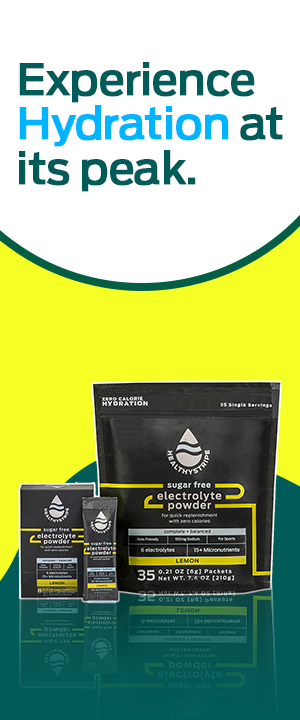Muscle Fatigue: Causes, Symptoms, And Best Ways To Recover From It

Muscle fatigue has the potential to impact you not only during exercise and sports but also in your daily life. It may manifest as an inability to complete 10 push-ups instead of being limited to just a few repetitions. Alternatively, you may encounter unexpected difficulties while attempting to cycle up a familiar steep hill that you typically conquer effortlessly weekly.
Regardless of the situation, symptoms such as muscle soreness and decreased energy levels can significantly impede your ability to perform regular activities. Understanding the causes of muscle fatigue and learning preventive measures can be instrumental in addressing this issue. Although there have been many studies on this topic, there isn’t any conclusive evidence regarding what causes muscle fatigue (1).
What Is Muscle Fatigue?
At the onset of physical activity or while engaging in tasks, your muscles initially exhibit strength and resilience. However, as time progresses and movements are repeated, your muscles may gradually lose their strength and become weary. This phenomenon is commonly referred to as muscle fatigue weakness.
Causes And Symptoms Of Muscle Fatigue
To gain a better understanding of muscle fatigue, let’s delve into the mechanics of your muscles.
Muscles play a crucial role in generating force for movement through contractions. These contractions are initiated by chemical reactions that cause muscle fibers to lengthen, shorten, or tighten. By contracting, your muscles can exert force and motion.
Frequent muscle contractions during exercise, particularly during high-intensity workouts, are a common catalyst for muscle fatigue. Researchers have proposed various theories to explain why sustained exercise can lead to muscle exhaustion. These theories include the following:
- ATP Depletion: Adenosine triphosphate (ATP) is your muscles’ primary energy source. Prolonged physical exertion can deplete ATP levels, hindering or weakening muscle contractions.
- Muscle Fatigue Lactic Acid: Intense exercise triggers lactic acid production in your muscles. Previously, it was believed that lactic acid buildup caused post-workout muscle burn and fatigue. However, recent studies suggest that the decrease in pH caused by this exercise-induced buildup plays a more significant role (2). The acidic environment within your muscles can result in a burning sensation and decreased muscle output.
- Loss of Electrolytes: Electrolytes are essential for robust muscle contractions. During vigorous exercise, sweat leads to the loss of electrolytes and water, which can contribute to fatigue and muscle cramps.
- Aging: Our muscles become less efficient (3). Reduced levels of ATP and other vital proteins necessary for muscle force and power are observed. Additionally, connective tissue may become stiffer, and muscle fibers can shrink. These age-related changes can accelerate muscle fatigue and legs condition in people.
Several other factors can influence the rate at which muscle fatigue sets in. These factors include your fitness level, exercise intensity, and environmental conditions.
Symptoms of Muscle Fatigue
Source: https://static.hindawi.com/articles/bmri/volume-2018/9341215/figures/9341215.fig.001c.jpg
Muscle fatigue can manifest in various body regions and is characterized by various distinctive symptoms. One of the primary indicators of this condition is a pronounced sensation of muscle weakness, whereby affected muscles struggle to exert their normal strength. Additionally, there are several accompanying muscle fatigue symptoms, including:
- Soreness: Individuals experiencing muscle fatigue may encounter a notable tenderness or discomfort in the affected muscles. This soreness can vary in intensity, ranging from mild to severe, and may be accompanied by stiffness or achiness.
- Localized Pain: Alongside general muscle soreness, individuals may also experience localized pain in specific muscle groups. This pain can manifest as a dull ache, a sharp or stabbing sensation, or a persistent throbbing in the affected area.
- Shortness of Breath: Muscle fatigue can lead to respiratory difficulties, such as a sense of breathlessness or increased breathing effort. Individuals may feel out of breath even during minimal physical exertion or when engaging in regular activities.
- Muscle Twitching: Another common symptom of muscle fatigue is the occurrence of involuntary muscle twitches or fasciculations. These twitching movements are often rapid and irregular, and they can be visible under the skin or felt as subtle vibrations within the affected muscles.
- Trembling: Individuals with muscle fatigue may experience trembling or shaking sensations in their muscles, especially when performing tasks requiring sustained effort or fine motor control. These tremors can manifest as mild shakiness or, more pronounced, uncontrollable shaking.
- Weak Grip: Weak grip strength is a telltale sign of muscle fatigue. Individuals may struggle to firmly grasp or hold objects, resulting in difficulty performing routine manual tasks or feeling a diminished ability to maintain a secure grip.
- Muscle Cramps: Muscle fatigue can also lead to painful muscle cramps. These cramps often involve sudden, involuntary contractions of the affected muscles, causing significant discomfort and temporary immobility.
If an individual begins to experience difficulty performing their daily tasks or if any of the symptoms above worsen over time, it is crucial to seek immediate medical attention. These developments could indicate an underlying, more serious health condition requiring prompt evaluation and treatment.
How To Prevent And Treat Muscle Fatigue?
Improper exercise, prolonged combat, military training, and certain related diseases like cancer and stroke can contribute to the development of muscle fatigue quickly. This condition has a detrimental impact on athletic performance, military combat readiness, and patient recovery. There are no official or widely accepted recommendations for treating muscle fatigue. However, several nonspecific treatments have been used in clinical or experimental settings and have shown some efficacy in various studies. These treatments include synthetic products like amphetamines and caffeine, natural products like ginseng and Rhodiola rosea, and nutritional supplements like vitamins, minerals, and creatine.
- Synthetic products, including ephedrine, amphetamines, and caffeine, enhance resistance to muscle fatigue conditions (4). These substances are sometimes used in sports to enhance performance, although their use may be controversial due to their potential side effects. Caffeine, a legal substance in sports, has similar effects on muscle fatigue. High doses of caffeine have been shown to improve athletic performance during exercise.
- Natural products like ginseng, a herb with several potential health benefits, have been explored to alleviate muscle fatigue. Additionally, garlic has been studied for its potential to reduce muscle fatigue.
- Nutritional muscle fatigue supplements, such as multivitamins and fish oil, are commonly used to ensure adequate nutrient intake. Deficiencies in certain nutrients, like vitamin D, can contribute to muscle problems, including fatigue. By providing sufficient nutrition, dietary supplements can help maintain the health of muscles.
- Ergogenic aids, such as creatine, are widely used in sports to enhance muscle performance. Creatine is a naturally occurring acid that aids in providing energy to muscles during movement. Sports foods also contain various substances that supply muscle energy and improve performance. For example, energy drinks like Red Bull contain a combination of carbohydrates, taurine, and caffeine. While these products claim to reduce muscle fatigue, scientific evidence supporting these assertions is currently limited.
It is important to note that synthetic products, natural products, and nutritional supplements for treating muscle fatigue should be cautiously approached. Consulting with a healthcare professional is advisable to ensure safe and appropriate usage and consider individual circumstances and potential interactions with other medications or conditions.
Best Tips for Recovering from Muscle Fatigue
Looking to recover from muscle fatigue more effectively? Here are some tips to provide your body with the necessary support and space to recover, ensuring you’re prepared for your next workout. While some people may enjoy the feeling as a sign that exercise is effective, it’s important to recover properly to avoid potential harm. So, you can employ numerous quick and straightforward methods at home to support your recovery process.
- Rest And Recuperate: Like top athletes who take a day off after a major game, your body also requires rest. To ensure optimal recovery, the American Council on Exercise advises waiting until muscle soreness has subsided before resuming the exercise or activity (5). Allowing sufficient rest until the muscles feel no longer tender or sore is recommended to avoid potential overexertion and promote proper healing. If it takes longer, it indicates that you may have pushed yourself too hard, and it might be wise to consider scaling back. During rest periods, your body’s immune system repairs your muscles. The good news is that your muscles will be stronger once rebuilt. Gradually increasing the intensity of your exercise over time can help you become fitter and stronger.
- Massages Or Myofascial Release: Professional athletes often spend a significant amount of time receiving massages, which can reduce the severity of delayed muscle pain by relieving muscle tightness and enhancing tissue elasticity. This leads to faster recovery and reduces the risk of muscle fatigue and related injuries during subsequent workouts.
- Cool Down: While we’re all familiar with warming up before exercise, it’s equally important to cool down afterward. If you’ve engaged in heavy-weight training or resistance exercises, engaging in light aerobic activities like a short bike ride or run can aid muscle recovery. Similarly, if you’ve completed a long endurance training session, opting for a shorter bike ride or jog the next day can be beneficial. Low-intensity exercise promotes blood flow, facilitates healing, and prevents further muscle damage.
- Cross Training: Variety is key when it comes to exercise. If your routine consists solely of running, you primarily train one set of muscles while placing increased strain on them. Incorporating diverse types of training, such as running one day, weightlifting on another, or swimming, engages different muscle groups. While some muscles rest and recover, others are being challenged. This approach not only enhances recovery but also improves overall fitness levels.
- Prioritize Sleep: Many people need help to get adequate sleep in our fast-paced lifestyle. However, this is when the body produces essential hormones for muscle repair and recovery. Getting the recommended amount of sleep will accelerate healing and leave you feeling fitter and healthier.
- Optimal Nutrition: The significance of nutrition cannot be overstated. Food provides the fuel that your body converts into energy. Maintaining a healthy diet rich in whole foods, lean proteins, complex carbohydrates, and antioxidants can stimulate the necessary bodily changes between workouts. Some excellent additions to your diet include pomegranates, watermelons, eggs, dairy products, starchy vegetables, and a moderate amount of coffee, which can help reduce muscle pain.
- Consider Supplements: Certain dietary supplements can give your body the necessary nutrients for improved muscle recovery. These supplements contain concentrated forms of substances found in natural foods and can be purchased online or at most health food stores. Some recommended supplements include urolithin A, magnesium, whey protein, creatine, and tart cherry juice concentrate.
Additionally, it’s crucial to listen to your body. It will communicate when you’re pushing too hard, need to scale back, and are ready to resume exercise. If your muscle fatigue recovery takes longer than usual, it might indicate that you’ve been overly ambitious with your training. Conversely, if you’re recovering more quickly, it could be a sign that you’re ready to get back into action. Your body constantly sends messages, so paying attention and adjusting accordingly is essential.
Conclusion
Muscle fatigue is characterized by the reduced force exerted during muscle actions. While this symptom is typically not a cause for concern and can be resolved with rest, persistent fatigue may indicate an underlying issue. Neglecting to address this condition could result in overexertion and an elevated risk of injury. It is essential to refrain from self-diagnosing. If you experience muscle fatigue along with other unusual symptoms or if your condition fails to improve within a few days, it is advisable to seek medical attention and schedule a visit with your doctor to get muscle weakness in the legs treatment.
What is the difference between muscle weakness and fatigue?
Muscle weakness is reduced muscle strength, making generating force or performing movements challenging. It can be caused by muscle, nerve, or underlying medical conditions. Fatigue, conversely, is a subjective feeling of tiredness or a decline in muscle performance after exertion. It is temporary and often associated with muscle exhaustion due to activity, inadequate rest, or systemic factors affecting energy metabolism.
How do you test muscle fatigue?
Muscle fatigue can be tested using various methods for muscle weakness nursing diagnosis, such as measuring a decrease in muscle strength or endurance through specific exercises or tasks, assessing changes in electromyography (EMG) signals, or conducting fatigue index tests that evaluate muscle performance before and after exertion.
Is muscle fatigue permanent?
Muscle fatigue is not typically permanent. Muscle fatigue can be temporary and reversible with proper rest, recovery, and management of underlying factors. However, chronic or persistent fatigue may indicate an underlying health condition that requires medical attention.
Why does muscle fatigue occur?
Muscle fatigue occurs due to a combination of factors, including the depletion of energy stores (such as ATP), accumulation of metabolic byproducts (like lactic acid), impaired nerve signaling, and muscle damage or strain from intense or prolonged exertion.
What are the signs of muscle fatigue?
Signs of muscle fatigue include a decline in muscle strength and endurance, increased effort required for muscle contractions, decreased coordination, and a sensation of heaviness or weakness in the muscles.









